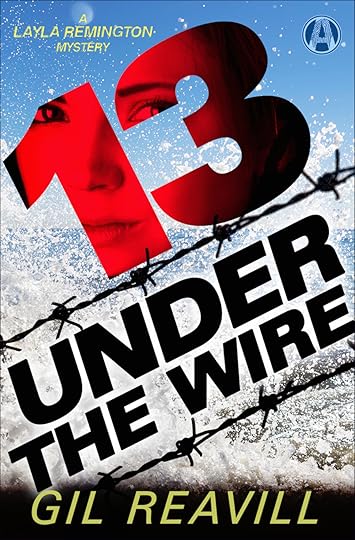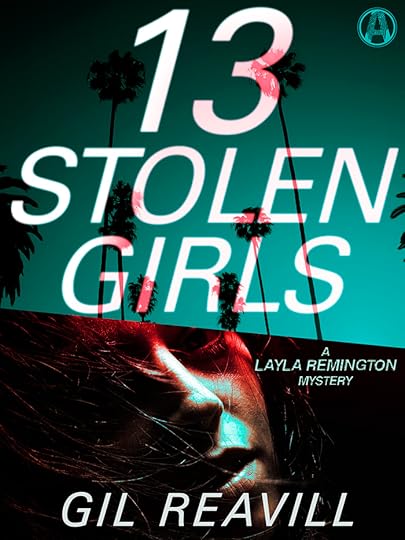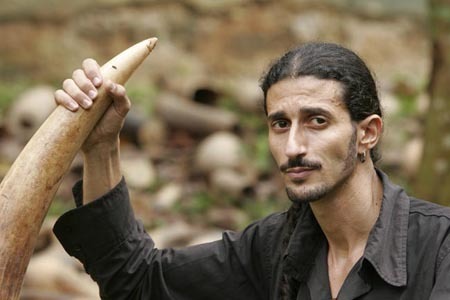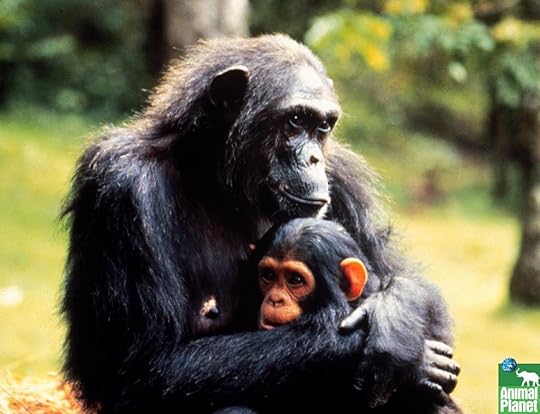Gil Reavill's Blog
December 16, 2020
This Book Is No Stranger
June 1, 2016
NewInBooks Q&A
Inquiring minds want to know! A new interview with Ben from NewInBooks off the new release of 13 Under the Wire. New, new, new! A sample:
What can you tell us about your new release, 13 Under the Wire?
“Parents are not supposed to have favorite children, or if they do, they are instructed to keep their mouths shut about it. But somehow this third entry in the Layla Remington “13” series has wormed its way deep into my heart. Yes, there’s murder and mayhem in abundance, as befits a crime novel, but the book wound up steeped in nostalgia for young love, times gone by and remembrance of things past…”
February 14, 2016
New Title, New Cover Style
Random House decided to go a little splashier for the next entry in the Layla Remington series, due in May.
August 18, 2015
Fresh Off the Presses
June 18, 2015
The Last Great Ape
Meet Ofir Drori, a former soldier turned activist who is battling the slaughter of great apes in their native habitats. Jane Goodall has long predicted the extinction of great apes in the wild. Drori took that as a challenge, and suited up as a warrior to prevent Goodall’s sad vision of the future from coming true.
Drori’s story is told in a stirring documentary by Mark McDannald, available for viewing free at cultureunplugged.com. Ofir: A Wildlife Crime Documentary chronicles a war against powerful enemies, not limited to poachers but extending to the corrupt government officials who protect them. To paraphrase Oscar Wilde, if this is the way we treat our great apes, we don’t deserve to have any. 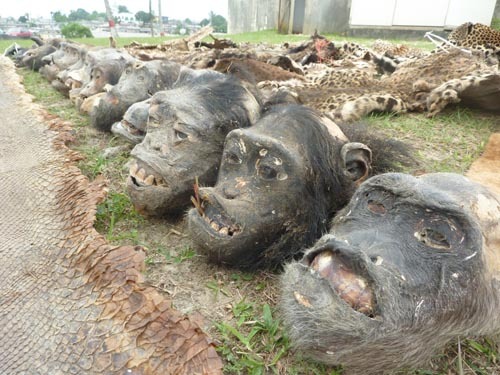
June 15, 2015
Paging Dr. Moreau
In a move that effectively bans lab experiments on chimpanzees, the U.S. Fish and Wildlife Service designated the whole species, both wild and in captivity, as endangered. Wild apes have long been listed as endangered under the Endangered Species Act, but now chimps housed in research facilities across the country will have the same protection. The designation was announced last week but won’t take effect until September.
This ends the long brutal history of poking, prodding, slicing, dosing, skull-drilling, electro-shocking, isolating and otherwise mistreating chimps. It also ends their usefulness as lab animals, which will lead to the closure of whatever few breeding programs are left. With chimpanzees in the wild getting slaughtered for bush meat, losing their homes to deforestation, suffering from Ebola and other human-introduced plagues, and with the world’s captive chimps no longer reproducing, there’s a real a chance we’ll face a no-chimp future within fifty years.
If they knew how badly we were going to treat them, they probably never would have come.
April 28, 2015
Savaged
Today marks the paperback publication of the best little Gilded Age feral child love story murder mystery ever written, Jean Zimmerman’s Savage Girl. Get thyself out and purchase a copy, then give it a rave up on Good Reads.
April 25, 2015
As Per
Author Per Petterson (Out Stealing Horses, I Curse the River of Time, I Refuse) appeared Friday (4/24) as part of the New York Public Library’s “Live from the NYPL” program. The surroundings were suitably swanky, the Wachenheim Room, and the host was the personable NYPL program director, Paul Holdengruber. Petterson’s personality seemed to mirror his books, a combustible mix of ego and shyness, which is a normal configuration for artists. Under Holdengruber’s probing, Petterson delivered some home truths: “The book is dead before the reader takes hold of it.” “How would I know how the story ends if I haven’t written it yet?” Holdengruber quoted a writer’s apothegm: “Method is the path after you’ve traveled it.” He told of an Italian writer who worked on a typewriter because, the writer said, compared to a word processor a typewriter was more like life, with no delete key, and a “linear present” that means you can’t easily go back and check, re-check and worry your text. It reminded me of something I heard about Ernest Hemingway, that he wrote description out longhand and dialog on a typewriter, since he thought it was better for staccato human speech.
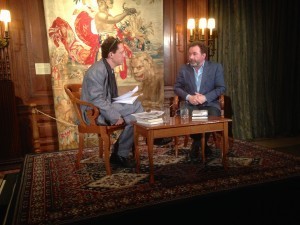
Holdengruber (left) with Per Petterson
April 22, 2015
One Small Step for Apes
One giant leap for humankind…
A lot of people are buzzing about the truly epoch-making judicial order by Justice Barbara Jaffe of the New York State Supreme Court granting a writ of habeas corpus to Hercules and Leo, two chimpanzees used for research purposes at Stony Brook University. Perhaps frightened by the splash she made in the press and among advocates of legal rights for animals, Justice Jaffee later amended the order by striking out the words “writ of habeas corpus.” That move didn’t entirely negate the power of the ruling, since Stony Brook officials (the suit specifically names Stony Brook president Dr. Samuel L. Stanley, Jr.) are still required to show cause in court as to their imprisonment of the apes–the first time such an order has been issued. The judicial two-step demonstrates how fraught is the whole idea of legal personhood for chimps and the other great apes.
I’m forwarding a copy of 13 Hollywood Apes to Dr. Stanley. Give the doc a jingle at The Office of the President | 310 Administration Building, Stony Brook, New York 11794-0701; phone: (631) 632-6265; fax: (631) 632-6621.

SUNY Stony Brook President Stanley (center): he has legal rights; his chimpanzees don’t
April 20, 2015
Hair and Now
Whenever I hear tales about the failure of experts, I think of the 1986 Challenger disaster. Those were different days, and a full seventeen percent of the American public watched on TV as the Space Shuttle Challenger launched. Since Christa McAuliffe, a school-teacher, was one of the astronauts on board, young children all over the country were dragooned into classrooms to witness the blast-off. It was supposed to be a heart-warming, isn’t-America-great?, you-can-do-it lesson for the impressionable young tykes.
What could possibly go wrong? The engineering experts at NASA had assured everyone (and each other) about the safety of the shuttle program.
Well, an O-ring on the Challenger’s rocket booster failed, and millions of schoolchildren watched as their astronaut heroine got blown to smithereens. A whole generation grew up with a little dent in their childhood innocence. I hope some of them developed a healthy skepticism about the reliability of experts.
The subject crops up again in recent revelations that the FBI Laboratory in Quanitco, VA, consistently overstated the reliability of hair analysis. In case after case, the forensic techs at the FBI Lab’s Microscopic Hair Comparison Unit slanted their findings in ways that were scientifically challengeable or invalid. The Justice Department (aided by the Innocence Project and National Association of Criminal Defense Lawyers) analyzed 268 trials where hair analysis was used in evidence, and found flawed forensic testimony in an astonishing 95 percent of the cases. More sobering was the study included 32 death penalty trials.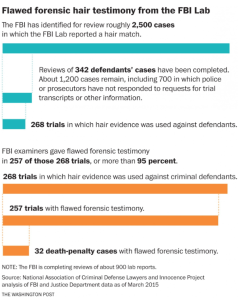
So why was such flawed testimony used without question? Part of it, I think, is the infamous “CSI Effect,” named for the popular TV series. In forensic-based TV crime programs such as that one, it’s a black and white world. The evidence is always clear. Experts are never wrong. A single hair puts the bad guy away. CSI and other such entertainment is tremendously popular. So juries have become trained to believe expert testimony. It would be impossible to make up a jury in present-day America if jurists disqualified everyone in the pool who watched crime programs on TV.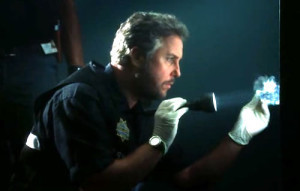
In the real world, it doesn’t work the way it happens on TV. The real world is not black and white, it’s herringbone. Evidence gets contaminated. Lab techs error. Investigatory bias creeps in.
Without a doubt, forensic science is an incredibly valuable tool. Bad people do bad things and should be brought to heel. But human fallibility has to be figured into both sides of the equation. Mistakes happen on both sides of the badge. When lives are at stake skepticism isn’t just healthy, it’s vital.


